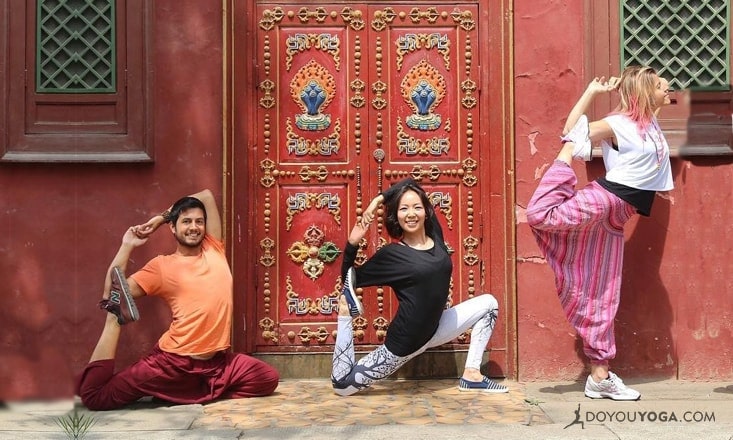Mermaid pose is one variation of Pigeon pose that exudes grace, stability, strength, and open-heartedness. It can be used as a preparatory posture for King Pigeon, and on its own challenges the practitioner to stabilize the pelvis and core in order to extend the spine.
As Mermaid pose requires the use of flexibility for optimal stability, it is common for the body to be misaligned when entering and holding the pose. The following are common misalignments in Mermaid pose and how you can fix them to keep your body stable, open, and injury-free.
1. Rotation of pelvis forward towards the front of the mat, or hips squared.
When the quadriceps and hip flexors are tight, it can be challenging to bend the back knee in order to grab the foot. As a result, the back hip rolls out which can create compression in the lower back when creating spinal extension.
To avoid this, focus on internally rotating the back thigh, and hugging the inner legs together for stability.
2. Sinking the pelvis down towards the floor.
When there is little to no engagement of the legs, the pelvis sinks/collapses into the ground, which can create compression in the lower back. It is important to use the strength of the legs to support the upwards lifting and lengthening actions of the spine.
Hug the legs in towards the midline strongly enough that the pelvis literally lifts away from the earth, knowing that the strength of your legs is creating adequate stability from which you can extend your spine freely.
3. Collapsing into the lumbar spine.
As is the case with most backbends, it is common to “dump” into the lower back. To avoid this, lengthen the tailbone towards the ground, while pulling in through the navel to create space in the lower back and activate the core. This will allow the backbend to be supported with core strength without putting stress on the lower spine.
4. Chest rotating towards the back leg.
This is typically a result of tightness in the shoulders and chest. As Mermaid pose is very much a backbend, it is important to create flexibility in the upper body to help with the rotation of the chest, and the extension of the spine (the backbend itself).
That isn't to say that having tight shoulders means you can't practice the pose. As the hands clasp (or fingers link) together behind the head, focus on drawing the front shoulder back and down, while lifting the chest, and drawing the shoulder blade tips down and forward into the heart.
In approaching Mermaid pose, misalignments commonly arise from tightness or lack of flexibility in the body. The pose itself demonstrates immense freedom in the hips, psoas, spine, and shoulders. Being "tighter" in these areas doesn't necessarily preclude you from practicing Mermaid pose, however, awareness of the potential misalignments and how to address them will help make your journey towards this elegant backbend more worthwhile.


